“Squarespace is so easy hun, I love it!!!11”
“You should just choose WordPress! It’s 100% future-proof.”
“Wix is super simple and I’ve been using it since my business started 9 years ago.”
“Shopify just does everything but the fees suck.”
“WooCommerce gives me so much more control.”
“I don’t even know what my CMS is. I think I got it with my domain?”
When you need to choose a content management system (CMS) for your small business website, you’ll get a lot of conflicting advice on the internet (especially in Facebook groups) about which one you should choose. Everyone seems so confident in their recommendations, too!
First up, let’s address our bias: we build WordPress websites. However, we don’t think WordPress is necessarily right for every business or use case and will recommend other platforms if they’re a better fit.
So, we’ve put together a pros and cons list for the top 7 most common CMS platforms used by small businesses in 2025. Hopefully it’ll help you narrow your options down and decide which systems are best for your use case.
WordPress
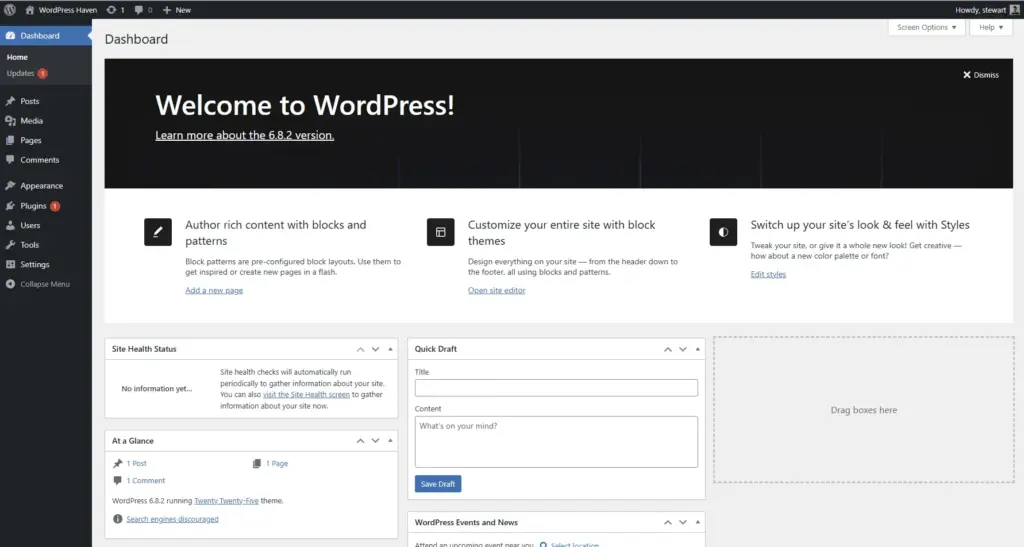
💵 Pricing: Self-Hosted – Free (plus hosting) | Hosted at WordPress.com – from $38/month
💻 Mainly used for: Blogs, small to medium business, eCommerce, membership/e-learning.
Since we build almost all of our websites using WordPress, we’ll start here. WordPress has a dominating 61.6% share of the CMS market. To put this in perspective, the number two is Shopify with a 6.7% share.
There are about a million and one different ways that you can use WordPress to build a website. You can code a theme from scratch, use a pre-made theme, use one of the many page builders, use the block editor, use one of the many block editor packs, and so on.
There are also thousands of plugins that can extend WordPress to do almost anything. You’ll find multiple plugins that cover the same functionality, so you are spoilt for choice.
It’s because of the overwhelming choices that many beginners shy away from WordPress. However it’s for that same reason that many professionals are drawn to WordPress to build websites for their clients.
Pros ✅
- Open source – you own your data and it’s free to use.
- Community – with its huge user-base and community, you’ll be able to find an answer to pretty much any question you have.
- Mature – WordPress has been around a long time so it’s battle-tested and reliable.
- Plugins – it’s massive free and premium plugin library will allow you to extend it to do almost anything you want.
- Security – with such a big open source community and team, security issues are dealt with fast.
- Scalable – as your business grows you can continue to extend your website.
- SEO – there are a number of SEO plugins with advanced features that make it easy to manage on-page SEO.
- Options – there are some many options for plugins, hosting and third part support.
Cons ❌
- Maintenance – you regularly need to keep on top of updates for WordPress and its plugins/themes.
- Cost accumulation – although WordPress is free, you may end up spending more on plugins/themes.
- Learning curve – It can take a while for a beginner to get comfortable with WordPress.
- Security – Because WP is the biggest, it has a big target on its back.
- Limited core features – WP on its own can be limiting, so you need to code or purchase third party software to extend it.
- Hosting – WP is free, but hosting it isn’t.
- Support – depending on where you host, your support options may be limited.
- Options – while there are heaps of options, this can also be overwhelming, especially when you just want something to ‘work’.
Shopify
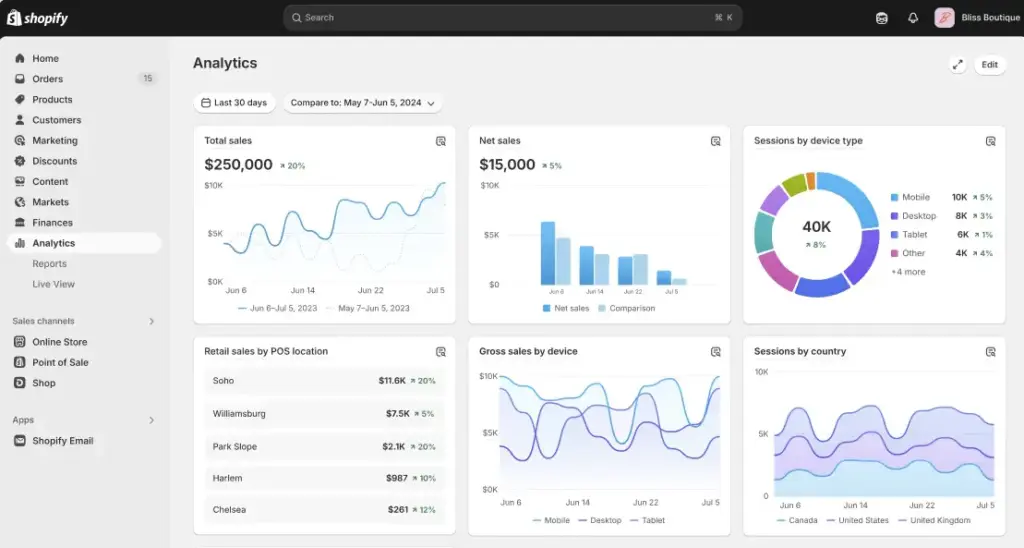
💵 Pricing: from $39/month
💻 Mainly used for: eCommerce
Shopify has the second largest market share at 6.7%. When you think eCommernce, chances are Shopfiy comes to mind.
They make it easy to set up an eCommerce shop that works out of the box. There are also a number of apps in the marketplace which make it easy to extend the functionality. A big downside is that costs can balloon very quickly, especially if you have complex needs, or are running a decent sized online shop.
The pay-off is that Shopfiy manage the entire platform, so you don’t have to stress too much about security, or the website going down when you have a sudden influx of traffic.
Pros ✅
- eCommerce focus – Shopify is built specifically for eCommerce, and does it well.
- Reliable hosting – hosting is fully managed with no need to worry about maintenance, security, updates, etc.
- Scalable infrastructure – if you start as a small shop and grow to thousands of orders a day, it scales with you.
- Support – you can access 24/7 direct from Shopify.
- Custom development – developers can create custom themes.
- Payment processing – is integrated, with the ability to use third party processors.
- Apps – access to an app marketplace to extend functionality.
Cons ❌
- Costs – can start out reasonable, but balloon quickly.
- Fees – if using third party payment processors, shopify can charge additional fees on top.
- Customisation – if you’re not a developer, customising the website can be limiting.
- Costs – many basic features can be locked behind premium apps.
- Basic CMS – standard website features outside ecom are limited.
- Closed software – you are beholden to Shopify’s platform.
Wix
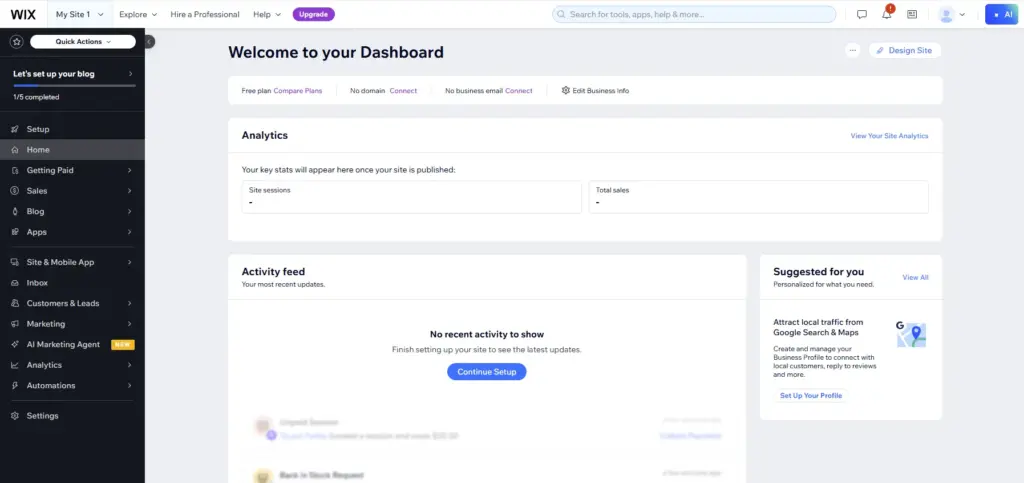
💵 Pricing: from $21/month
💻 Mainly used for: Start-ups, solopreneurs, basic e-commerce
With 5.2% of the CMS market share, Wix comes in at an impressive third place behind Shopify. I’m sure a key reason for this higher share is because they have a free tier which allows new businesses and hobbyists to set up simple websites for free. The free plan will force Wix branding on your site, a Wix subdomain, and other limitations.
Wix is similar to Squarespace in that it is a closed system targeted at DIY business owners, solopreneurs, and hobbyists. While Wix does attempt to target designers and developers, you will rarely find serious professional designers using Wix because of its limitations. In an attempt to make the website builder easy for every-day users, it makes it difficult for professionals to work with.
Just like Squarespace and Webflow, Wix also manages each aspect of the platform including hosting, security and updates. This comes with the same caveat of platform lock-in. If for whatever reason Wix no longer delivers for your needs, you can’t pick up your website and take it somewhere else.
Again, similar to Squarespace, it also offers eCommerce, bookings, analytics and marketing addons. If your needs are basic, these features are nice to have.
Pros ✅
- User friendly – the website editor is built for DIY beginners.
- AI builder – if you don’t really care about results, their AI will build a full website for you in no time.
- App marketplace – they have a decent marketplace of free/premium first and third party apps.
- All-in-one – lots of features built in like ticketing, marketing, memberships bookings, etc.
- eCommerce – basic eCommerce functionality is nice to have.
- Reliable platform – no need to worry about hosting, updates, security, etc.
- Support – easy to access 24/7 support.
Cons ❌
- Customisation/code – not a great experience if you want to highly customise anything.
- eCommerce – it’s there, but not as robust as Shopify/WooCommerce
- SEO – it’s there, but not advanced.
- Lock-in – if you want to take your website elsewhere, you can’t.
- CMS features – while it has basic blogging capabilities, anything more advanced is limited.
Squarespace
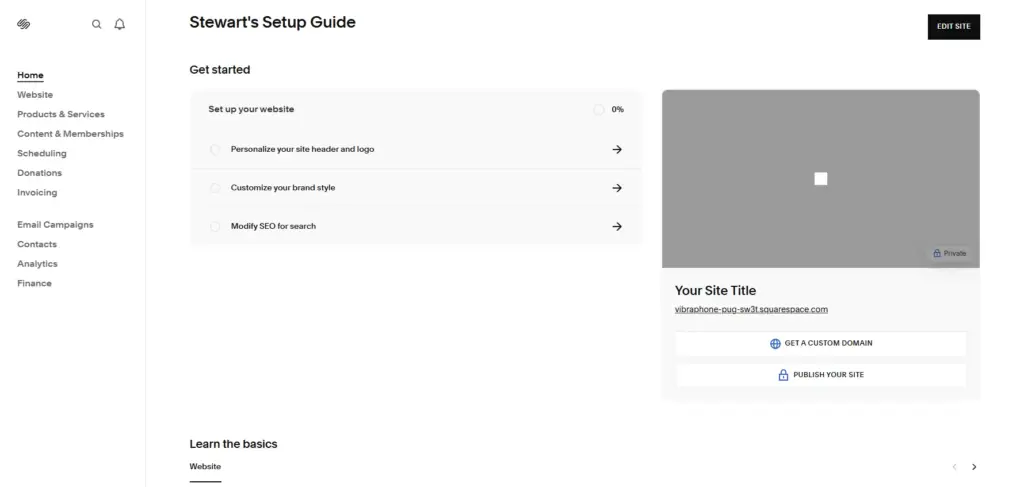
💵 Pricing: from $24/month
💻 Mainly used for: Small businesses, influencers/creators
You’ve probably heard about Squarespace from an advertisement on a podcast or video. And then you probably heard about it 10,000 more times from even more podcasts and videos. Their advertising budget is certainly reflected in their 3.3% CMS market share.
Squarespace’s target market is DIY small business owners and influencers. They aim to make it easy to get a website online by using their pre-built templates. And while it’s certainly easy to get a website up and running with Squarespace, it’s also easy to spot one from a mile away. They all look the same, and not in a good way (sorry I’m letting my personal opinion get a bit carried away here).
Squarespace is trying to create an ‘all-in-one’ platform by offering features that you normally need external services for like analytics, booking calendars, email marketing, invoicing, etc. While it’s great having so many features baked into a platform (think of the savings!), it also comes with two major drawbacks:
- Platform lock-in – if for any reason you need to change providers, it’s going to be a pain.
- Limited functionality – Offering so many features also means they may not be very robust. If you ever outgrow what they offer and need to move to another provider, well, see my previous point.
I’ll finish by saying I don’t hate squarespace (although it may look that way so far). Squarespace is great for certain use cases, and can be a good starting point when you need to quickly get your business online. As your business grows, or you need functionality outside of what Squarespace can provide, then you can look at moving to something with more flexibility.
Pros ✅
- Easy – with their design templates it’s really easy to get a website online fast.
- User friendly – it’s built for beginners and DIYers.
- All-in-one – has heaps of features built-in (email marketing, bookings, eCom, domains, etc.).
- eCommerce – while not as robust as Shopify or Woo, it’s great for basic eCom needs.
- Reliable platform – no need to worry about updates, hosting security, etc.
- Support – easy to access support.
- SEO – easy to use basic SEO.
Cons ❌
- Customisation/code – limited access to the code, not as flexible as WordPress, Webflow, Drupal.
- CMS features – while it has basic features for blogging, it’s not very flexible.
- SEO – while basic SEO is good, there are limited advanced SEO features.
- Pricing – can get expensive, particularly if you want to leverage their full offering.
- Lock-in – there’s no option to take your website anywhere else.
- Third-party – you won’t have access to a marketplace of addons like WordPress and Shopify.
Joomla
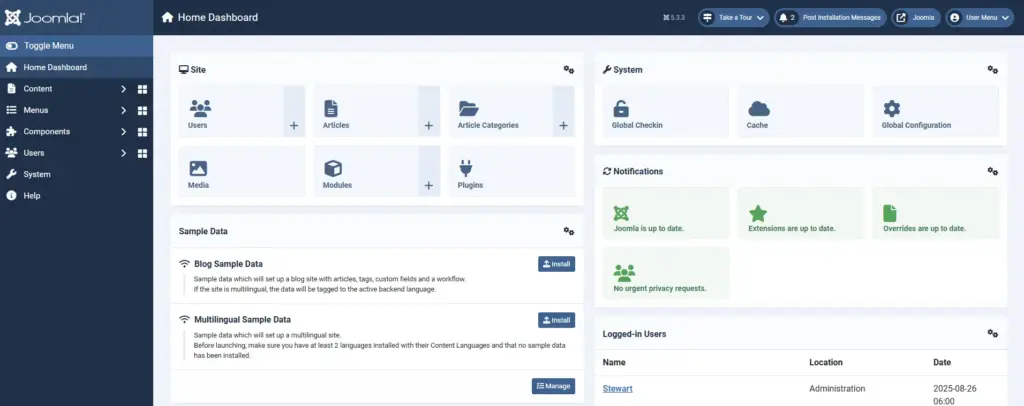
💵 Pricing: Free (open source)
💻 Mainly used for: Small to medium business websites
Aside from WordPress, Joomla is the first CMS on this list that is open-source and free. Unfortunately it is dropping in popularity with currently only a 2.1% market share (it was 7.5% in 2016). It is however a very mature open source project. It isn’t dead yet and still receives regular updates.
Just like WordPress, you can easily extend the functionality of Joomla with community created extensions. There are currently almost 5000 extensions in the repository. Joomla is open-source just like WordPress, so if you have the know-how, you can build your own extensions.
Joomla is quite flexible and powerful, so you won’t find many beginners using it. It’s predominantly used by professional developers and agencies because of its open and flexible nature. There are a few visual website builder addons created for Joomla which make it easier to use, and many of them also come with template libraries so beginners can get started easily.
If you don’t already know what Joomla is, and you don’t have much experience building websites, but you are drawn to the open source nature and flexibility of Joomla, I would suggest you check out WordPress first.
Pros ✅
- Open source – you own your data and it’s free to use.
- Mature – Joomla has been around a long time and is quite reliable.
- CMS – it’s good at organising complex content and data.
- User management – advanced capabilities and access management for users.
- Extendable – thousands of community made extensions.
- SEO – plenty of options for advanced SEO extensions.
- Community – although not as large as it once was, there’s a good community behind Joomla.
- Scalable – good for small websites or large complex websites.
- Options – plenty of options for extensions, hosting, and third party support.
Cons ❌
- Learning curve – if you’re new to web development, it will take time to learn the ins-and-outs.
- Community – with its small community, it may be difficult to find answers to more niche problems. As it declines in popularity, this may get worse.
- Maintenance – you will be responsible for hosting, security, and updates.
- Hosting – while Joomla is free, hosting it isn’t.
- Updates – some major updates (e.g. v4 to v5) may have breaking changes.
- Extensions – although there are plenty of extensions, some may be of low quality or no longer supported.
- eCommerce – there are a number of eCom extensions for Joomla, they’re not as robust as Shopify/WooCommerce.
Drupal
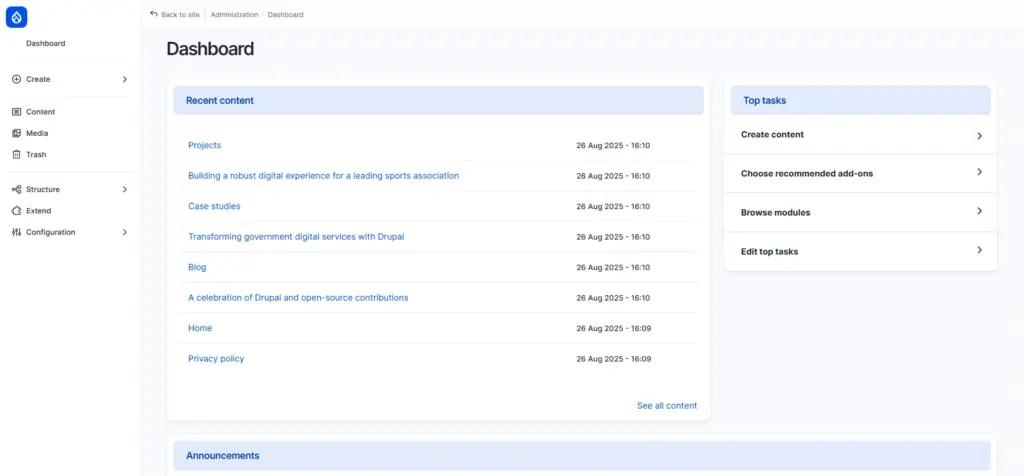
💵 Pricing: Free (open source)
💻 Mainly used for: Enterprise, governments, schooling institutions, businesses
Although Drupal only has a very small share of the market at 1.2%, and is continuing to decline (down from 4.9% in 2016), it is still a trusted and well loved platform for many developers. It has cornered a certain part of the market with many enterprise companies, governments, and universities choosing it because of Drupal’s focus on security and stability. It is however still used on many small to medium sized business websites.
It is very good at scaling to handle large and complex websites with thousands of pages. A lot of Drupal’s power comes from the way it handles the site content structure, allowing you to create complex architecture that other CMS’s struggle with.
Another big strength of Drupal is their ‘Modules’ library (think WordPress plugins or Joomla extensions). They have well over 50,000 modules created by the community, and the majority of them are free.
Although the community isn’t massive with its 1.2% market share, they are still alive and active, and full of experienced developers who use Drupal to manage high-stakes and complex websites.
Drupal also recently released their new ‘Drupal CMS’ which is a complete re-work of Drupal to make it more accessible to marketers, creators, and designers. This move makes it clear that they are still very invested in the Drupal project and want to get it into more hands.
Pros ✅
- Open source – just like WordPress and Joomla, Drupal is open source and free.
- Advanced and scalable – great for if you’re building a large complex website.
- Architecture – very good if you have complex architecture needs.
- User management – great for managing users with granular access.
- Security – there’s a reason governments choose Drupal.
- Community – not as big as WordPress, but a very active and dedicated community.
- Modules – a large module library to extend Drupal, and most are free.
Cons ❌
- Learning curve – while the new Drupal CMS makes it easy for newcomers, there is still a steep learning curve.
- Dev costs – development costs may be higher because of the need for devs who specialise in Drupal.
- Maintenance – just like WP and Joomla, you will need to manage hosting, updates and security yourself.
- Hosting – Drupal is free, but hosting it isn’t.
- Community – although the community is active, it’s still small.
- Major updates – like Joomla, major updates between versions may cause breaking changes.
- eCommerce – although Drupal’s commerce addon is flexible, it’s not easy to set up and extend like Shopify/WooCommerce.
Webflow
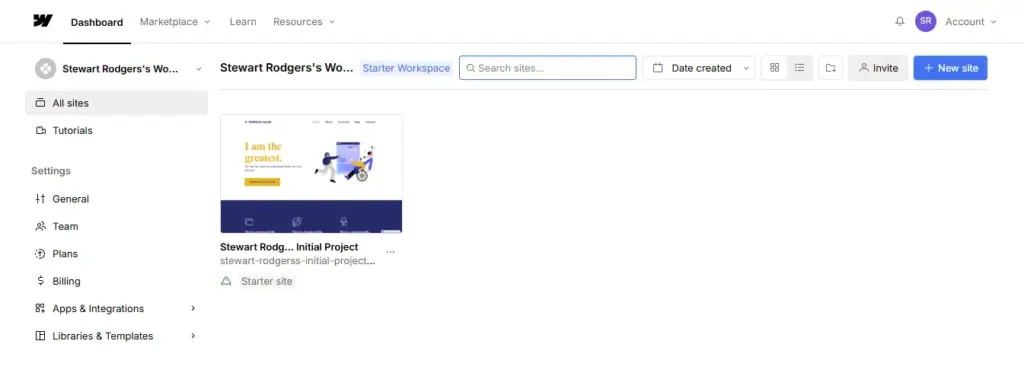
💵 Pricing: from $18/month (USD)
💻 Mainly used for: Small to medium business websites, eCommerce
Webflow has a much smaller piece of the pie, with only 1.2% market share among all CMS’s. However, considering its target market, this isn’t too shabby.
If your website is built in Webflow, and you’re not a designer/developer, then chances are you didn’t build it yourself. Webflow is targeted at designers/developers and agencies because of its flexibility and clean code.
Although Webflow isn’t an open source project, you are not entirely locked to their platform. They have an option to export your html, css and js files so that you can host your website somewhere else. This will only be beneficial for small simple websites, because any features that require their database cannot be exported (accounts, ecommerce, and other CMS features). It’s still cool that they have that option though.
Another point to note with Webflow is their pricing. They have faced controversy in the past about sudden and large price increases. When your website is locked to a platform, being faced with a sudden increase of hundreds or thousands of dollars can be… frustrating.
Pros ✅
- Builder – an advanced visual builder with designer/developer focussed features.
- Code – clean code output makes sites fast and easy to customise.
- CMS – a decent CMS making it easy to create ‘post’ type content.
- Reliable platform – no need to worry about updates here. Hosting, backups, software and security are all managed.
- SEO – a decent suite of SEO tools built in.
- eCommerce – should be sufficient for basic eCom needs.
- HTML export – you can export basic websites as html/css/js to host elsewhere.
Cons ❌
- Learning curve – beginners may struggle if they are not familiar with basic html and css
- Third party integrations – there aren’t many third party addons, meaning you may need custom development for complex functionality.
- Pricing – can get expensive as your site grows. History of sudden pricing changes.
- eCommerce – eCom functionality is fairly limited compared to Shopify/WooCommerce.
- Dependency – if your website relies on the database, you are locked in to the platform.
As you can see, it really depends on your budget, the level of customisation, whether you need eCommerce, whether you plan to scale up, and whether you have ongoing access to technical skills for maintenance and updates.
Fortunately, you’re not locked into one platform for the life of your business. If you don’t yet have the budget/resources for your ideal CMS platform, start with something basic and plan to upgrade your website down the track.